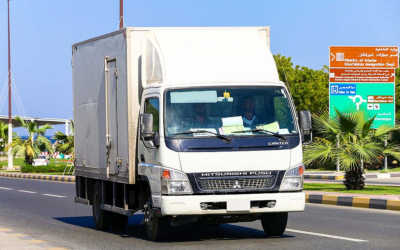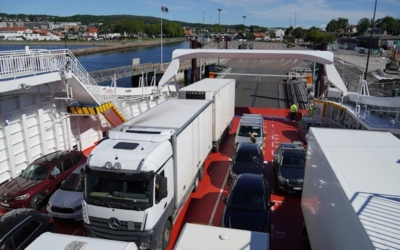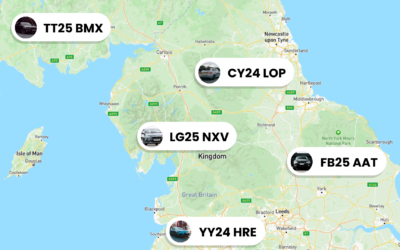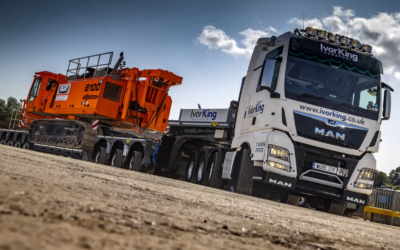Fleet Telematics: Cost-Cutting Playbook for Managers
Introduction — Why Telematics Is a Cost-Cutting Game Changer
Fleet managers face rising costs from fuel, maintenance, insurance and labour. If you’re managing routes, drivers and uptime, Fleet Telematics isn’t just another gadget — it’s the data backbone that helps you make better choices every day. This playbook gives you practical, ready-to-use steps to turn telematics signals into measurable cost reductions: choose the right metrics, set KPIs, fix processes and build a programme that scales.
The cost pressures fleets face today
Fuel volatility, parts backlogs, increased regulation and driver shortages are squeezing margins. Fleet telematics surfaces the behaviours and patterns driving those costs so you can intervene before bills escalate.
What this playbook delivers
Actionable guidance for selecting telematics devices, the high-value metrics to track, how to set KPIs and dashboards, and an implementation roadmap that prioritises quick wins. By the end you’ll have a checklist to reduce fuel, maintenance and administrative spend while improving uptime.
Telematics Fundamentals for Fleet Managers
Start with the basics so your Fleet Telematics programme rests on solid foundations. Understand what devices capture, how platform features differ and which deployment model suits your fleet size and operations.
What telematics systems do
Telematics combines GPS, vehicle diagnostics, sensor inputs and event logging to give a near real-time view of your assets. Think location, engine data (DTCs), idle time, and driver events like harsh braking — all feeding a platform that turns raw signals into insights.
Types of telematics deployments
Options include OEM-integrated telematics, aftermarket OBD-II or CAN-bus devices, and mobile-only solutions. OEM systems can be deep but costly; aftermarket devices balance capability and price. Choose based on vehicle types, expected lifespan and integration needs.
Key benefits tied to cost reduction
When deployed right, Fleet Telematics lowers fuel spend through better routing and reduced idling, cuts maintenance costs via condition-based alerts, reduces insurance premiums through safer driving records and limits administrative overhead with automation.
High-Value Telematics Metrics to Track
Not all data is equal. Focus on metrics that map directly to cost centres so you can prioritise action and measure savings.
Fuel-related metrics (MPG, idle time, route efficiency)
Measure MPG trends per vehicle, idle minutes per hour and route deviation. Small improvements in MPG compound rapidly across a fleet — make these numbers front and centre on your dashboard.
Driver behaviour (harsh braking, speeding, acceleration)
Event-based scoring highlights drivers whose behaviour increases fuel burn and wear. Use these signals for coaching rather than punishment to drive sustained change.
Vehicle health & diagnostics (DTCs, engine hours, battery state)
Monitor DTC frequency and engine hours to move from calendar-based to condition-based maintenance. Early alerts reduce breakdown risk and expensive emergency repairs.
Utilisation & routing (miles per vehicle, empty miles, route adherence)
Track miles, trips per day and empty/return miles to identify underused assets, right-size the fleet and consolidate loads to cut operating costs.
Compliance & safety (HOS, geofencing, incident logs)
Use telematics to automate compliance checks and keep incident records tidy — reducing fines, administrative time and insurance exposure. For deeper compliance applications, see how telematics helps with driver hours and safety.
Define KPIs and Build a Dashboard That Drives Action
A dashboard is only useful if it maps to your cost objectives. Design KPIs that translate data into decisions and make them visible to the people who act on them.
Selecting KPIs that tie to cost centres
Prioritise 6–10 KPIs across fuel, maintenance, labour and safety. Examples: average MPG, idle minutes per vehicle, percentage of preventive maintenance completed on time, and incident rate per 10,000 miles.
Setting realistic targets and benchmarks
Use a 90-day baseline before setting targets. Benchmarks can be internal historical performance or industry averages — aim for incremental targets to sustain momentum.
Dashboard design principles for managers
Keep it visual: top-line KPIs, trend sparklines, exception alerts and quick drilldowns to trip details. Role-based views keep drivers focussed on behaviour, while managers see fleet-level trends.
Reporting cadence and stakeholder ownership
Decide who needs daily exception emails versus weekly summaries. Assign ownership for each KPI and require a corrective action for repeat exceptions — ownership drives follow-through.
Turning Data into Operational Changes
Insights only deliver value when they change behaviour and processes. Here are practical levers to move the needle using your Fleet Telematics data.
Fuel management tactics based on telematics
Use route optimisation to cut miles, set idle thresholds and integrate fuel card data to detect fraud and inefficiencies. Even a 3–5% MPG improvement can justify a telematics programme.
Preventive maintenance driven by diagnostics
Trigger service work orders from DTC frequency or runtime thresholds. Condition-based maintenance reduces wasted parts and prevents in-service failures, improving uptime.
Driver coaching and incentive programmes
Combine event scoring with short coaching sessions and gamified incentives. Positive reinforcement accelerates adoption and improves safety records.
Route and dispatch optimisation
Real-time location data lets dispatchers re-route vehicles and consolidate loads, reducing empty miles and improving utilisation.
Reducing administrative overhead with automation
Automate DVIRs, service reminders and compliance reports. Less paperwork means more time for planning and proactive interventions.
Ready to see how this works in your fleet? Book a personalised Book demo with Traknova to walk through dashboards, live data and an implementation plan tailored to your fleet. A short demo will show concrete savings opportunities for your vehicles and operations.
Data Strategy, Integration, and Quality
Good decisions rely on trusted data. Your telematics programme must include rules for data quality, integration with existing systems and sensible retention policies.
Ensuring data accuracy and completeness
Monitor device health and set alerts for missing telemetry. Validate odometer readings, mileage and event timestamps to avoid misleading conclusions.
Integrating telematics with existing systems
Connect telematics to your TMS, CMMS and fuel systems to automate workflows. Reducing data silos increases the ROI of Fleet Telematics by enabling cross-system rules and reports.
Data retention, storage, and access policies
Decide retention windows based on compliance and analytics needs. Restrict access by role, and log exports or data-sharing to meet audit requirements — for guidance on GDPR and data security, see Understanding GDPR and Data Security in Telematics.
Analytics tools and simple models to use
Start with rule-based alerts and trend analysis. As you mature, add predictive signals for parts failure or driver risk. Simpler models deliver the fastest wins.
Implementation Roadmap & Checklist
A phased roll-out reduces risk. Use a pilot to validate assumptions, then scale with clear training and governance so Fleet Telematics becomes embedded in daily operations.
Pre-implementation assessment
Audit vehicle types, current workflows and stakeholder expectations. Define objectives in monetary terms (e.g. reduce fuel spend by X%) so success is measurable.
Pilot design and success criteria
Run a 6–12 week pilot on a representative subset of vehicles. Track baseline KPIs and require a minimum uplift to justify rollout.
Full rollout steps and timeline
Phase by vehicle type or region, schedule installs and stagger training. Allow a stabilisation window to refine alerts and workflows before moving to the next wave.
Training and adoption plans
Provide short role-based sessions for managers, dispatchers and drivers. Combine classroom, on-vehicle demos and quick reference guides to accelerate adoption.
Vendor Selection and Procurement Best Practices
Choosing the right vendor is critical. Don’t buy features you won’t use; buy the support that ensures adoption and measurable ROI.
Key capabilities checklist
Look for reliable device connectivity, open APIs, robust alerting, easy reporting and strong support SLAs. If security matters, check encryption and access controls. For hardware including Dash Cameras, ensure warranty and theft protection.
Pricing models and total cost of ownership
Understand per-vehicle subscription costs, installation fees and long-term platform charges. Factor in training, integrations and potential upgrades to avoid surprises.
Security, privacy, and compliance considerations
Ensure vendor processes align with your policies on data ownership, retention and driver privacy. For deeper context on security and fleet trends, see The Future of Fleet: 2025 Automotive Trends.
Pilot contracts and service-level agreements
Include clear SLAs for uptime, data accessibility and escalation paths. Define success metrics for the pilot and inclusion/exclusion criteria for full deployment.
Measure ROI and Optimize Continuously
Proving value keeps budgets and support intact. Measure savings by category and iterate on programmes based on what the data tells you.
Calculating savings by cost category
Estimate fuel savings from route and idling improvements, maintenance savings from reduced breakdowns, labour savings from automations and insurance gains from improved safety scores. Use conservative assumptions for initial projections.
Attribution: proving telematics caused the change
Use baselines, control groups or staged rollouts to isolate the effect of your Fleet Telematics interventions. Simple A/B comparisons validate your business case.
Continuous improvement loop
Review KPIs monthly, hypothesise changes, run short tests and scale winners. Make incremental improvements part of the operational rhythm.
When to scale or adjust your programme
Scale coverage when pilot KPIs meet targets and support teams can sustain operations. Adjust if device reliability or adoption lags — don’t be afraid to renegotiate vendor terms based on demonstrated value.
Common Pitfalls, Risk Management, and Next Steps
Know the typical stumbling blocks and how to avoid them so your programme actually delivers the savings you expect.
Typical implementation mistakes to avoid
Avoid over-automating without buy-in, ignoring data quality, and failing to assign KPI ownership. Plan change management early — technology alone won’t change behaviours.
Privacy, labour relations, and change resistance
Communicate transparently with drivers about what data is collected and why. Use coaching-first approaches and involve unions or worker representatives where required.
Quick wins to pursue in the first 90 days
Target idle time, a handful of high-incident drivers for coaching, and automating DVIRs or service reminders. Quick wins build momentum for broader changes.
Recommended next actions for managers
Run a quick fleet audit, identify three KPIs to track in the first 30 days and schedule a pilot. If you want help mapping the audit to an implementation plan, Book demo with Traknova and we’ll tailor a plan for your fleet.
Appendix & Resources
Extra materials to help you move faster and avoid redoing work.
Glossary of telematics terms
Short definitions for DTC, OBD, idle time, MPG, geofence and other terms so all stakeholders speak the same language.
KPI cheat sheet and template links
Ready KPI list and sample dashboard fields to copy into your platform — focus on MPG, idle minutes, DTCs per 1,000 miles and utilisation percentage.
Further reading and vendor comparison checklist
Suggested reads: Understanding GDPR and Data Security in Telematics, What Fleet Managers Need to Know About Charging Infrastructure for EVs and Telematics and Insurance: How Vehicle Tracking Lowers Premiums.
Conclusion
Fleet Telematics is the operational lever fleet managers need to reduce cost and increase uptime. Start small, measure carefully and scale what works. Clear KPIs, a short pilot and stakeholder alignment are the three ingredients that turn telematics data into repeatable savings.
Ready to take the next step? Book a tailored Book demo or consultation with Traknova to see how your fleet can capture fuel, maintenance and administrative savings in the first 90 days.
Frequently Asked Questions
How quickly will I see savings from Fleet Telematics?
Many fleets realise quick wins within 60–90 days, especially from idling reduction and targeted driver coaching. Full ROI usually appears within 6–12 months depending on fleet size and programme scope.
Will drivers accept telematics tracking?
Acceptance rises when you communicate benefits clearly — safety, fairer performance assessments, and incentives — and when data is used for coaching rather than punitive action.
How does telematics integrate with fleet systems?
Most modern telematics platforms offer APIs and pre-built connectors for TMS, CMMS and fuel systems. Integration automates workflows and increases the programme’s value.
Can telematics help with electrification planning?
Yes. Telematics provides duty-cycle and route data essential for EV suitability and charger planning. For a deeper dive, see Overcoming the Biggest Challenges of Fleet Electrification.
We want your feedback. Did this playbook help you identify an immediate telematics action for your fleet? Please tell us — your insights help us create better guides. If you found this useful, please share it with colleagues on LinkedIn or Twitter.
Question for you: What is the single biggest cost challenge your fleet faces right now? Reply with one word or a short sentence — we read every response and use them to tailor future content.
If you’d like a hands-on walkthrough, Book demo with Traknova or Contact us for bespoke consultancy. For solutions like Tracking, fleet Fleet Management tools and Security integrations, we can design a package to meet your priorities.
Thanks for reading — and good luck cutting costs while keeping your fleet moving.










